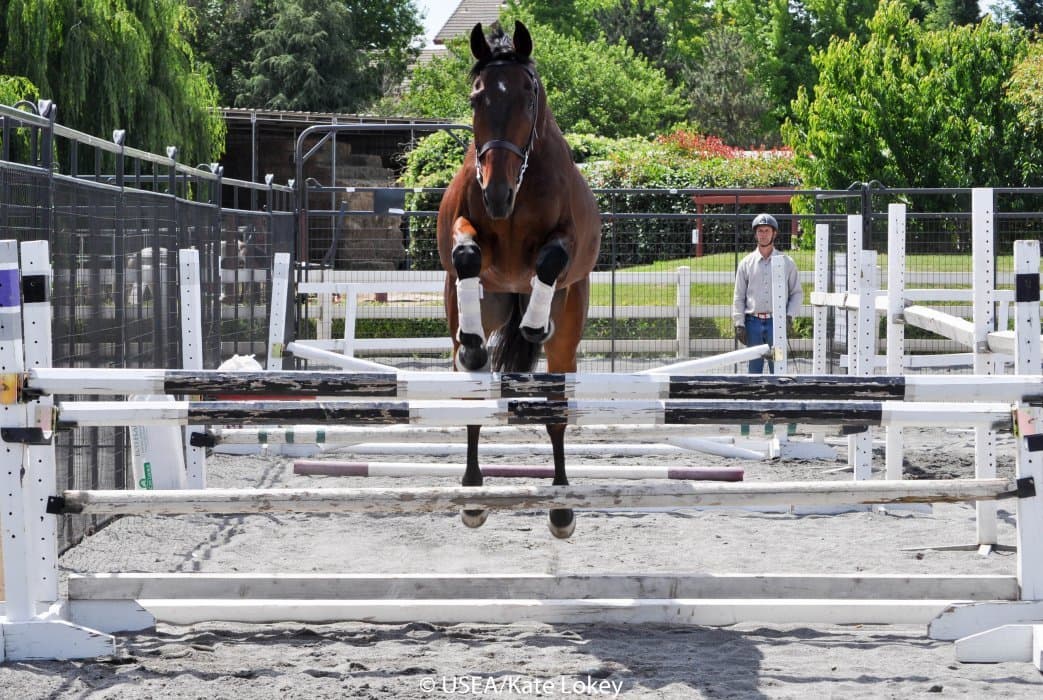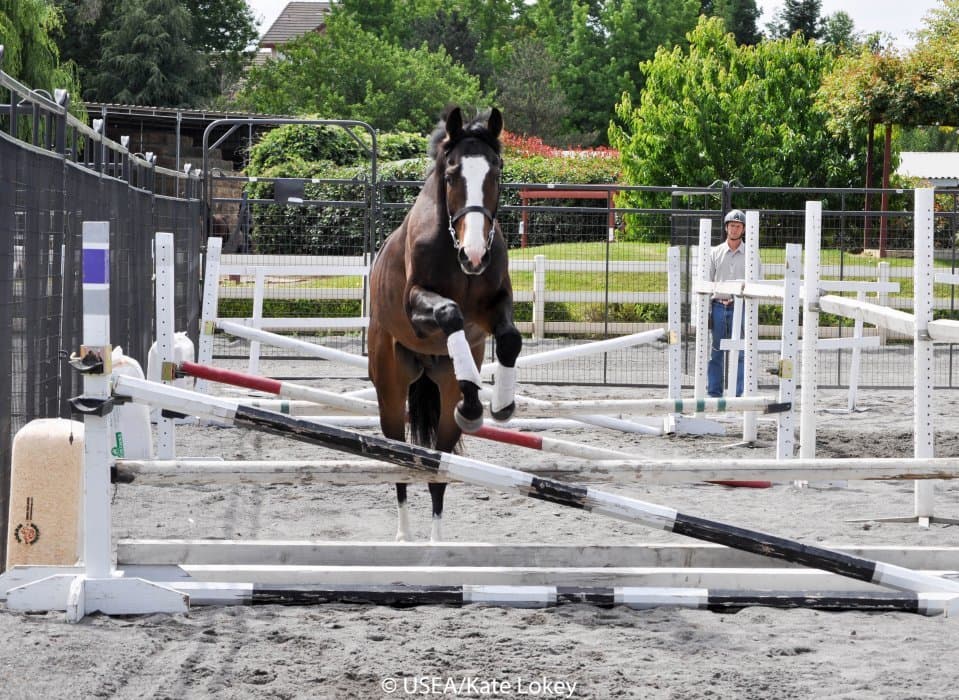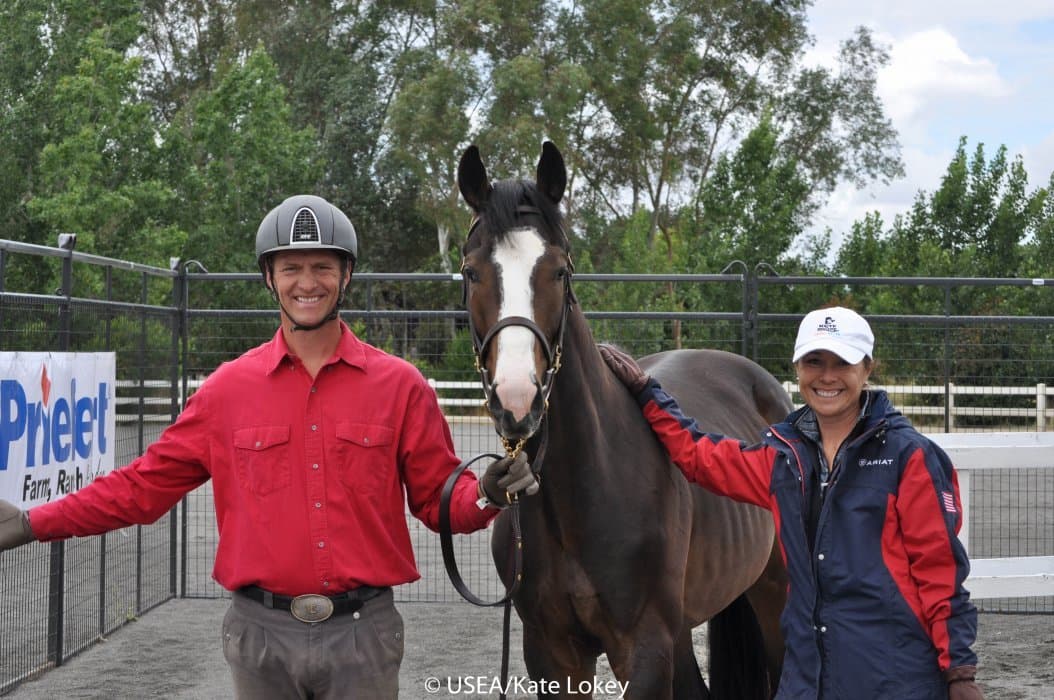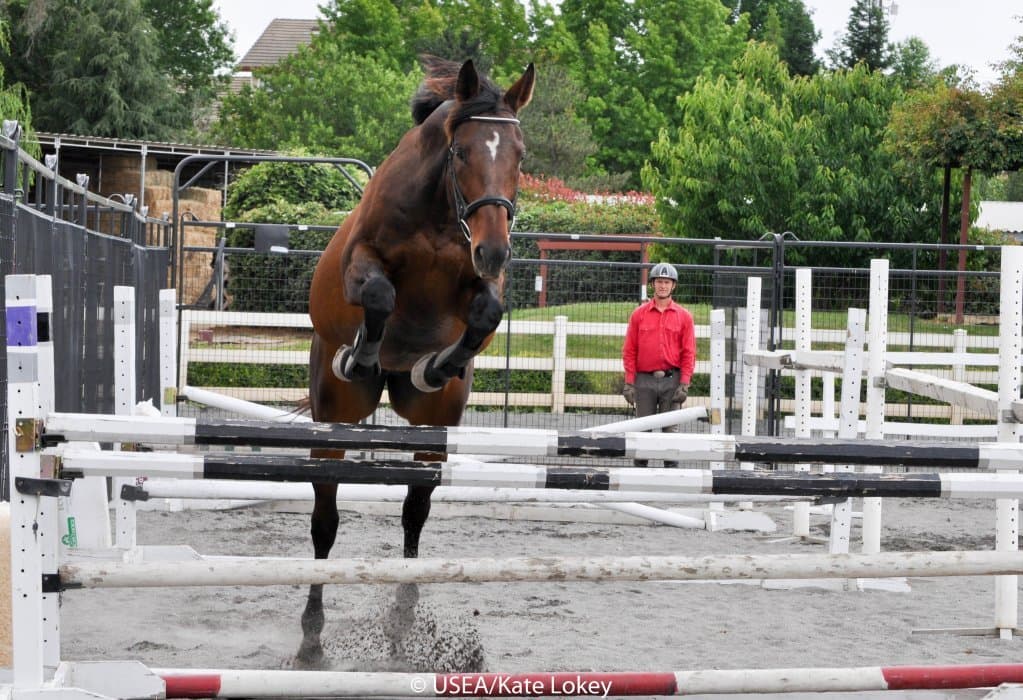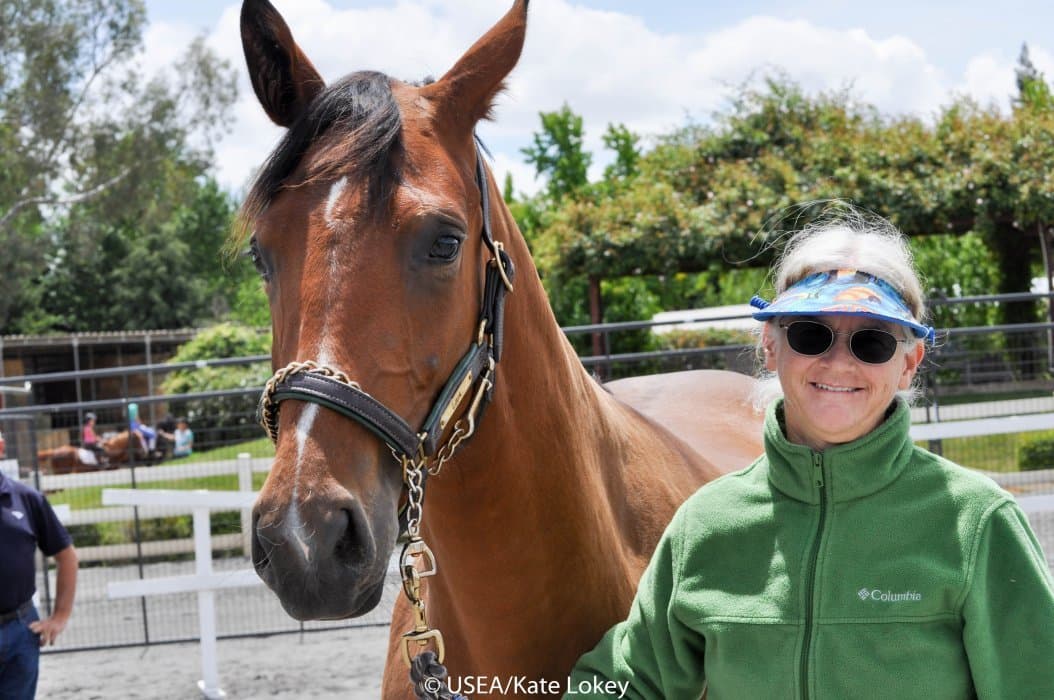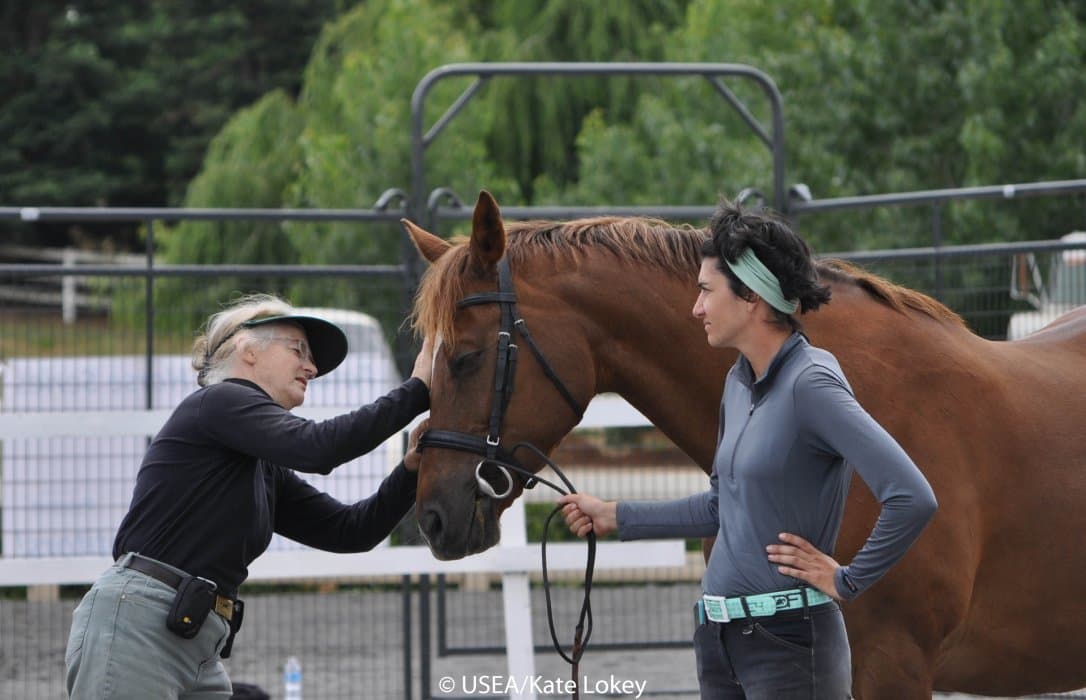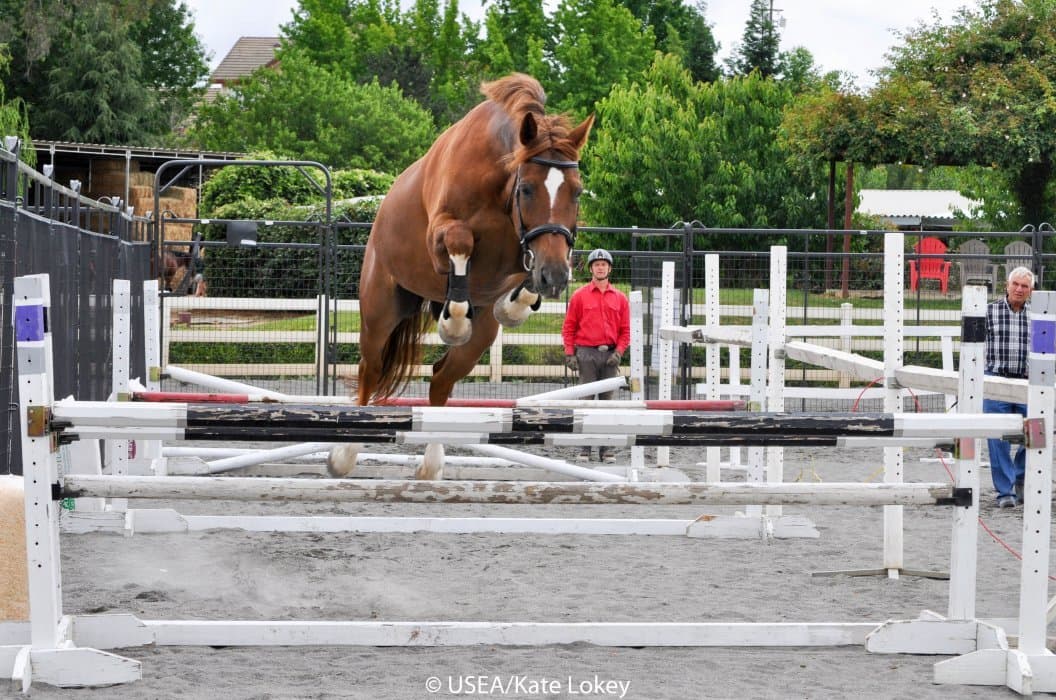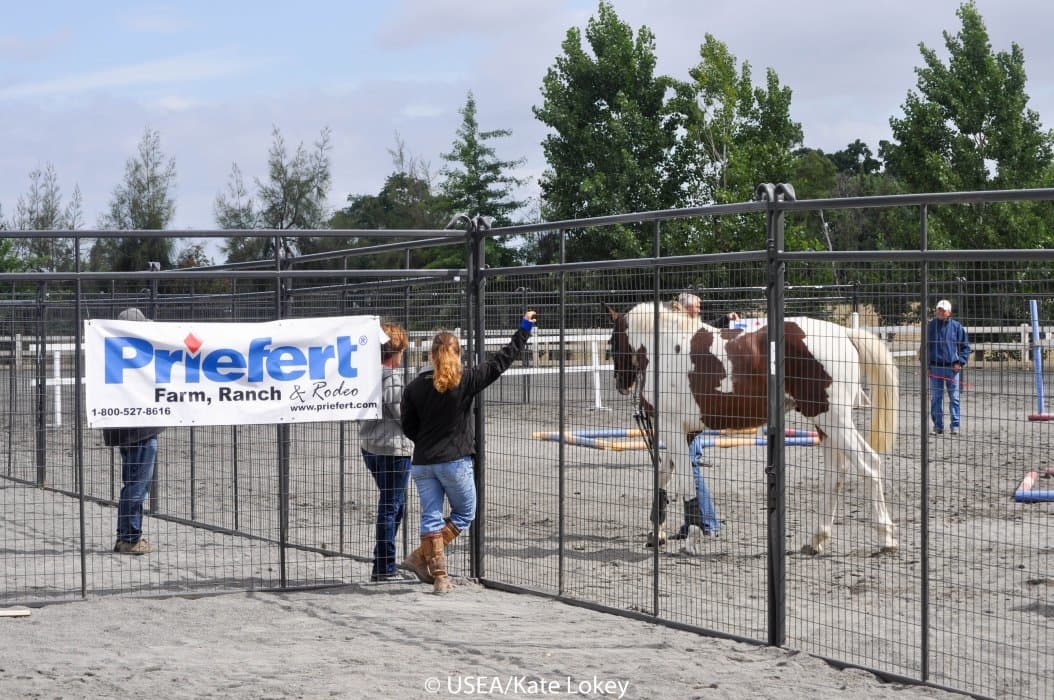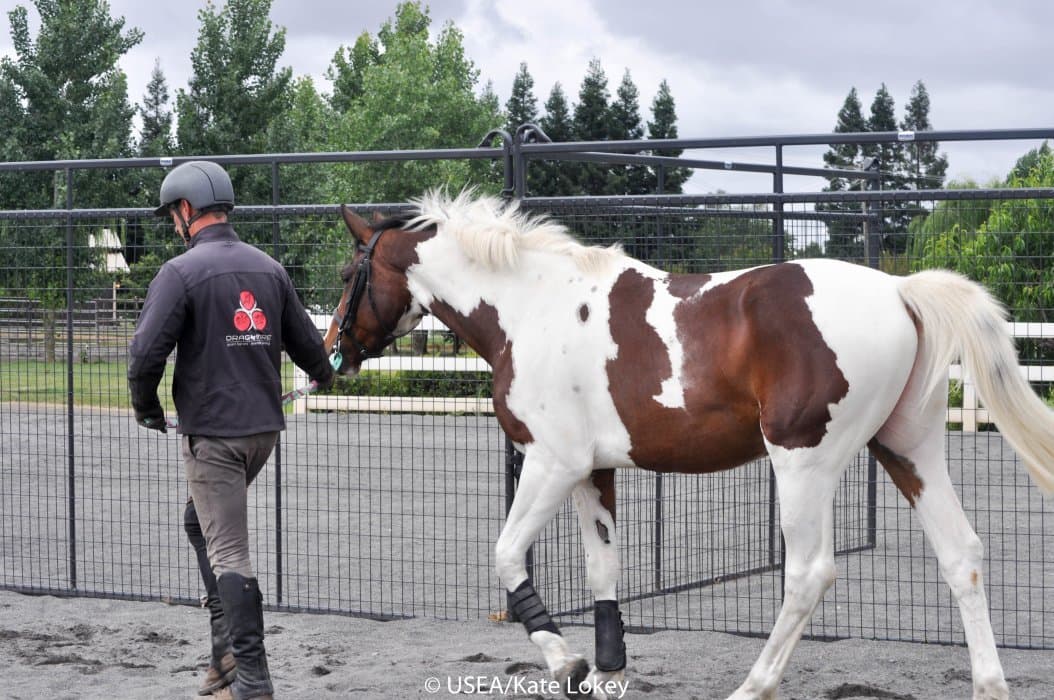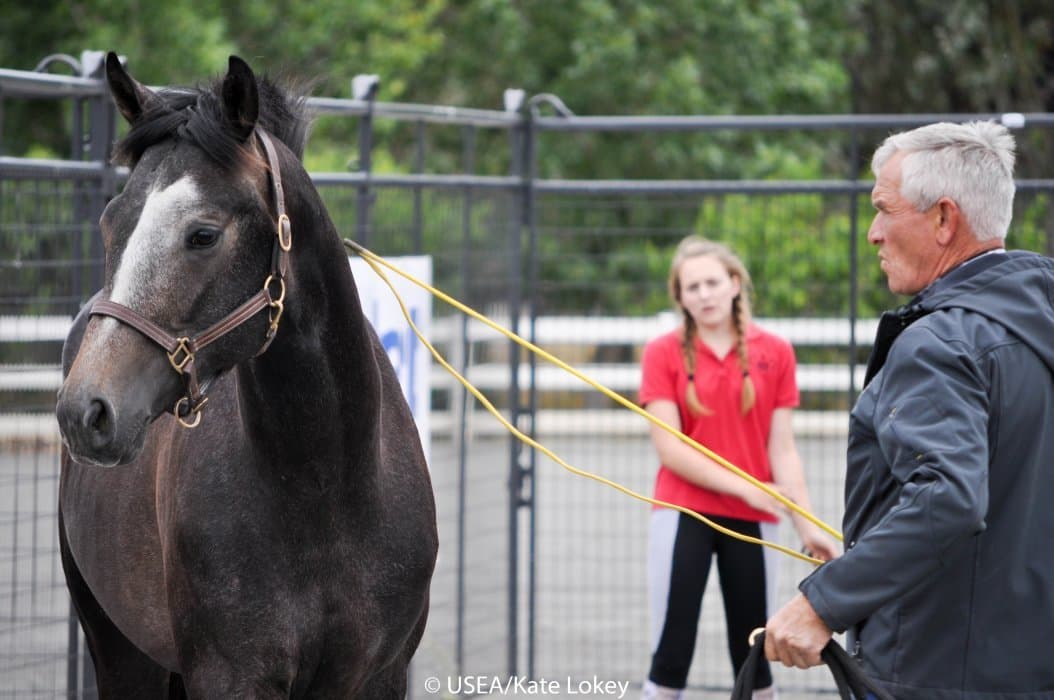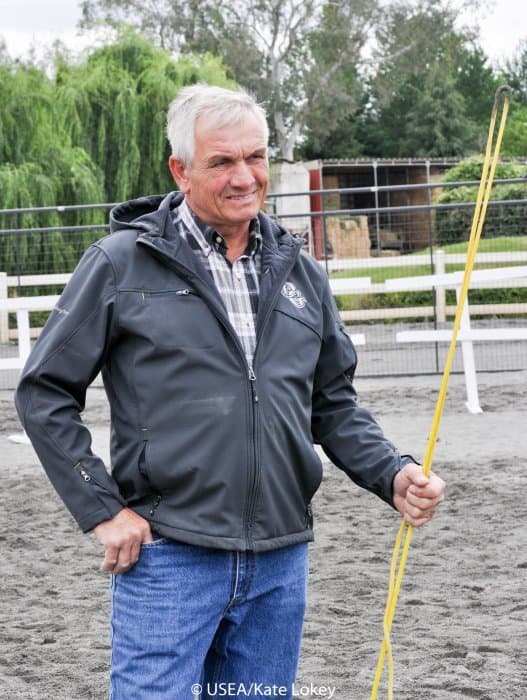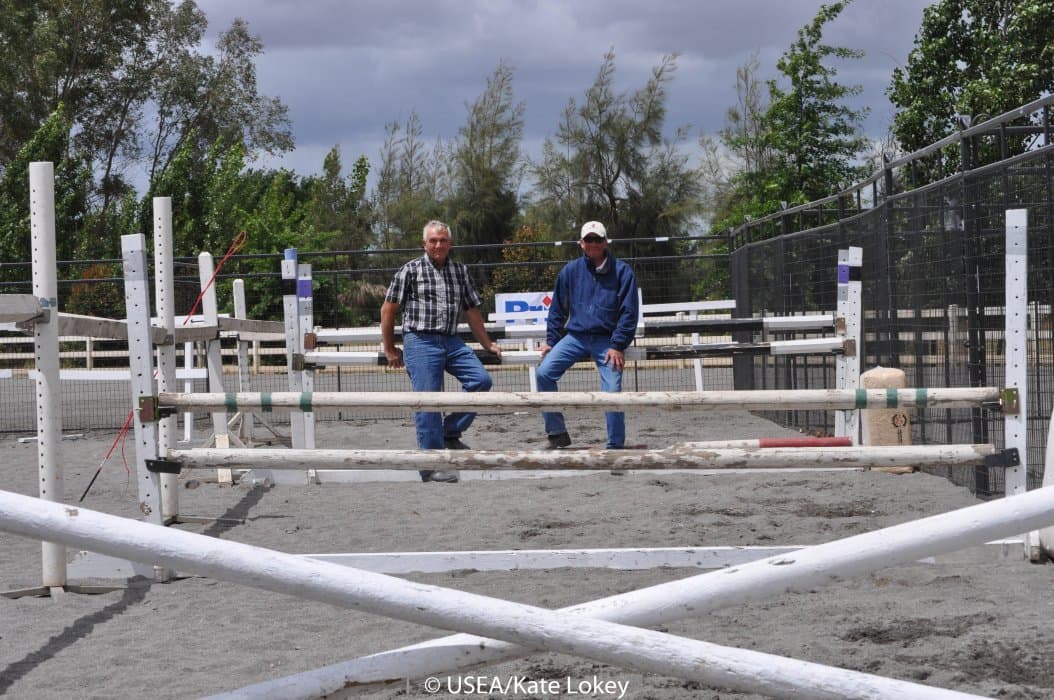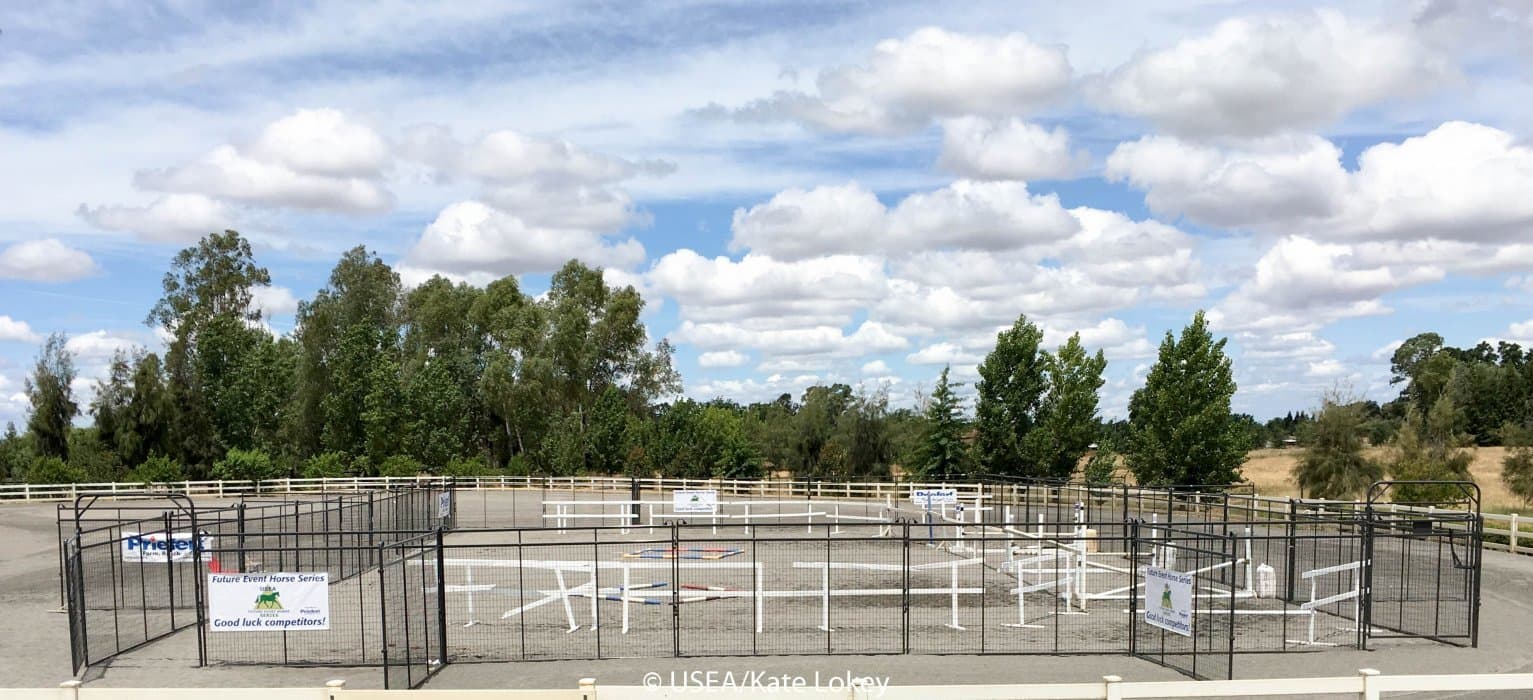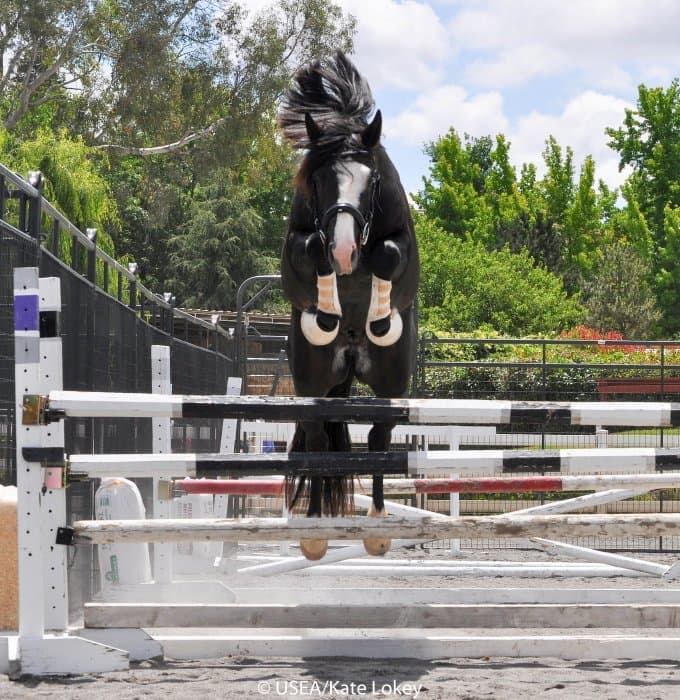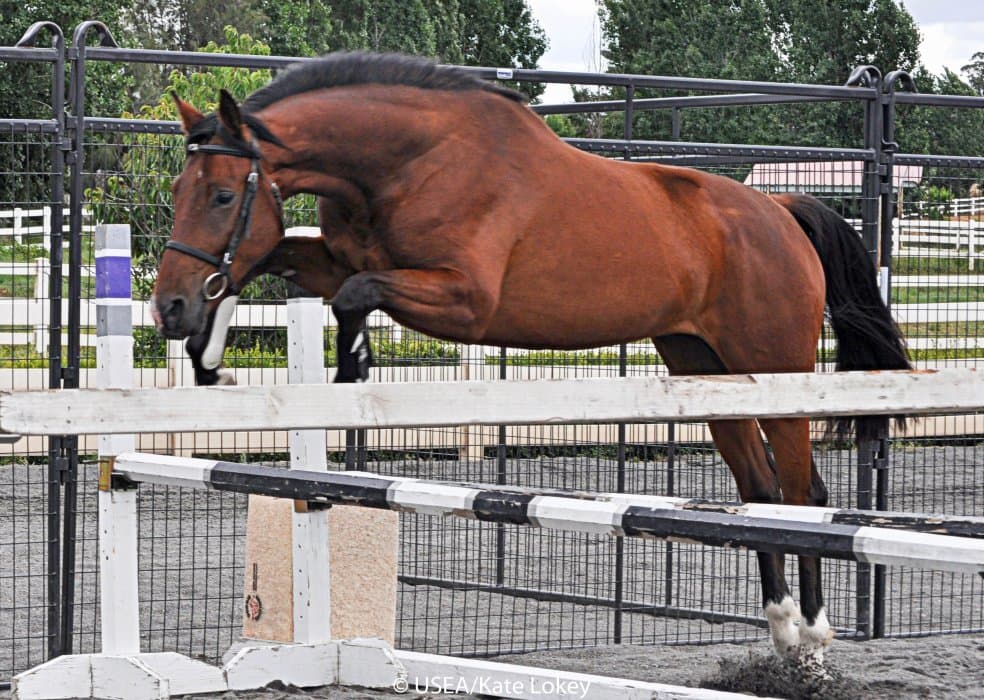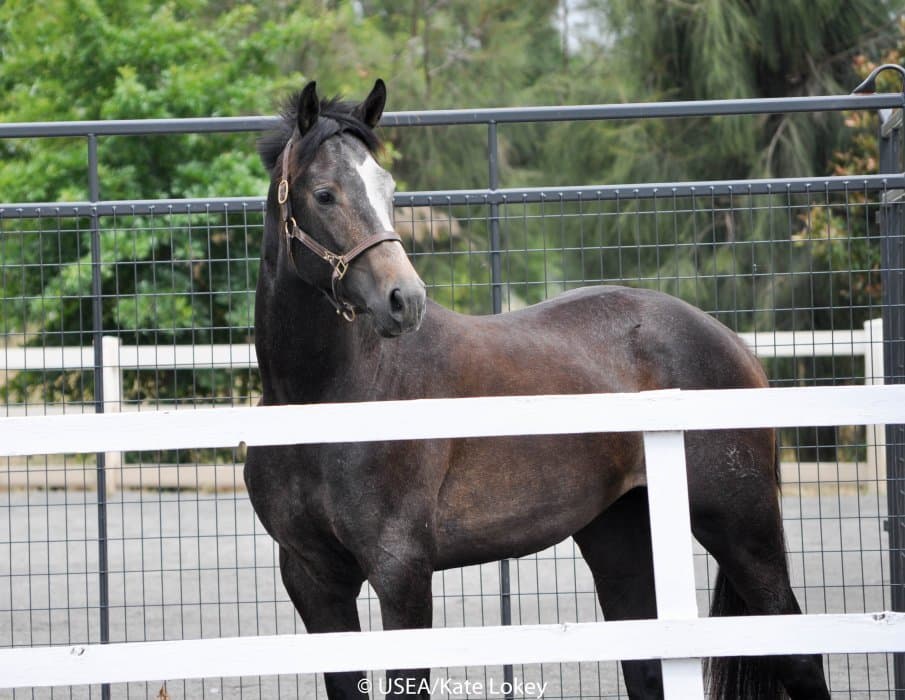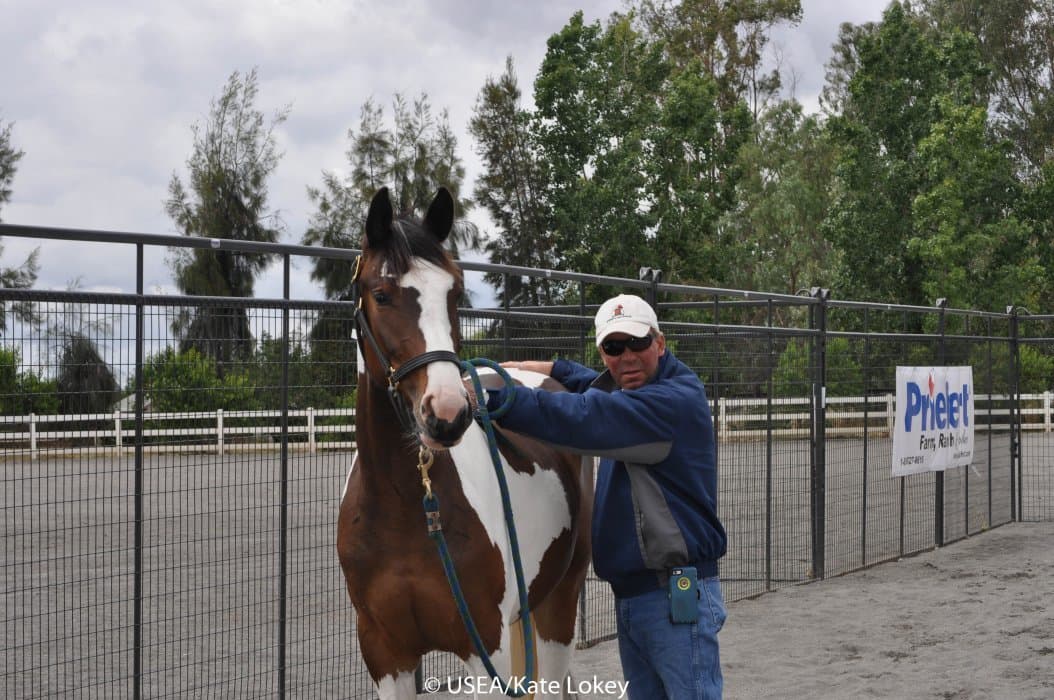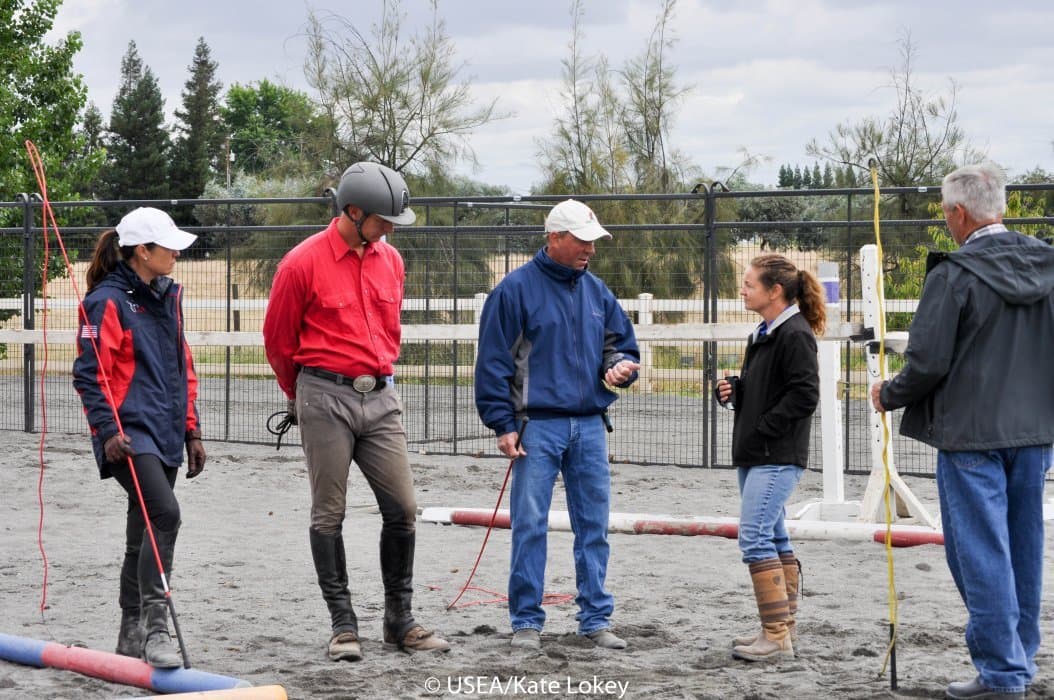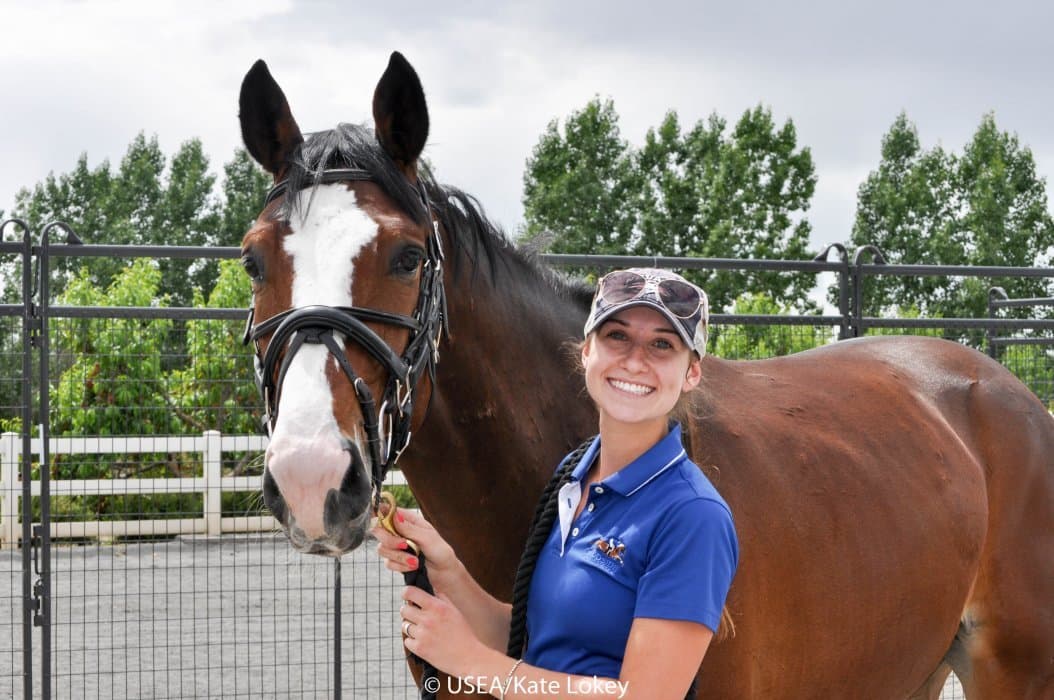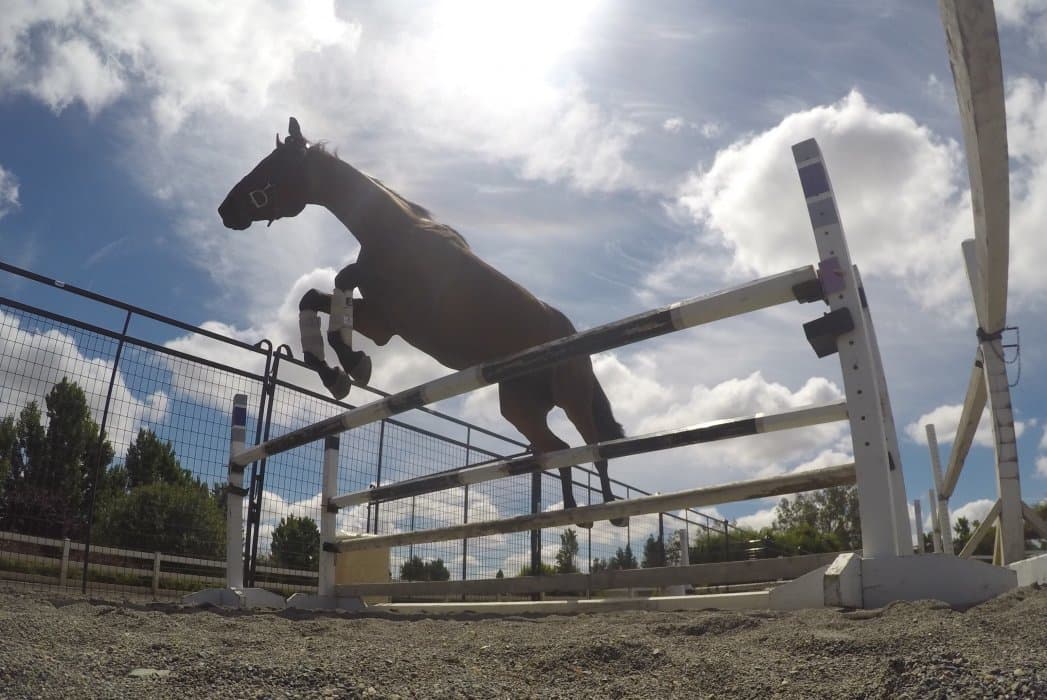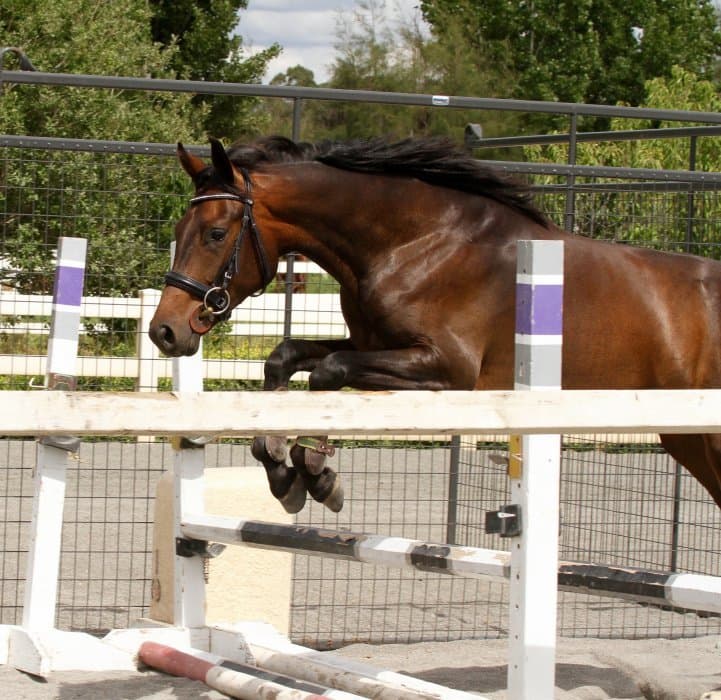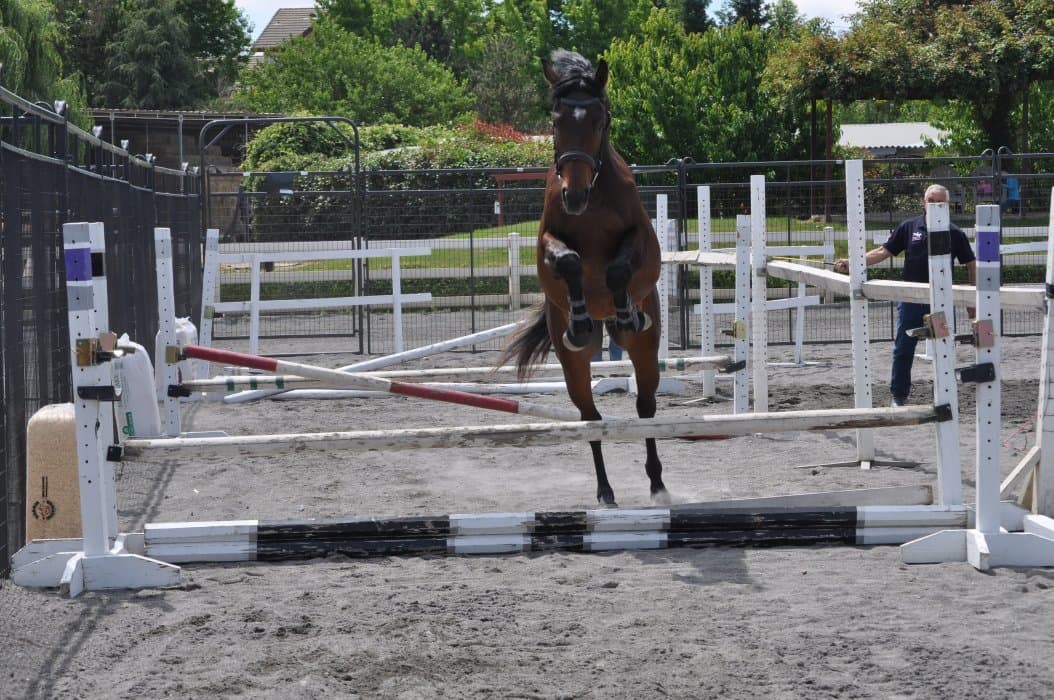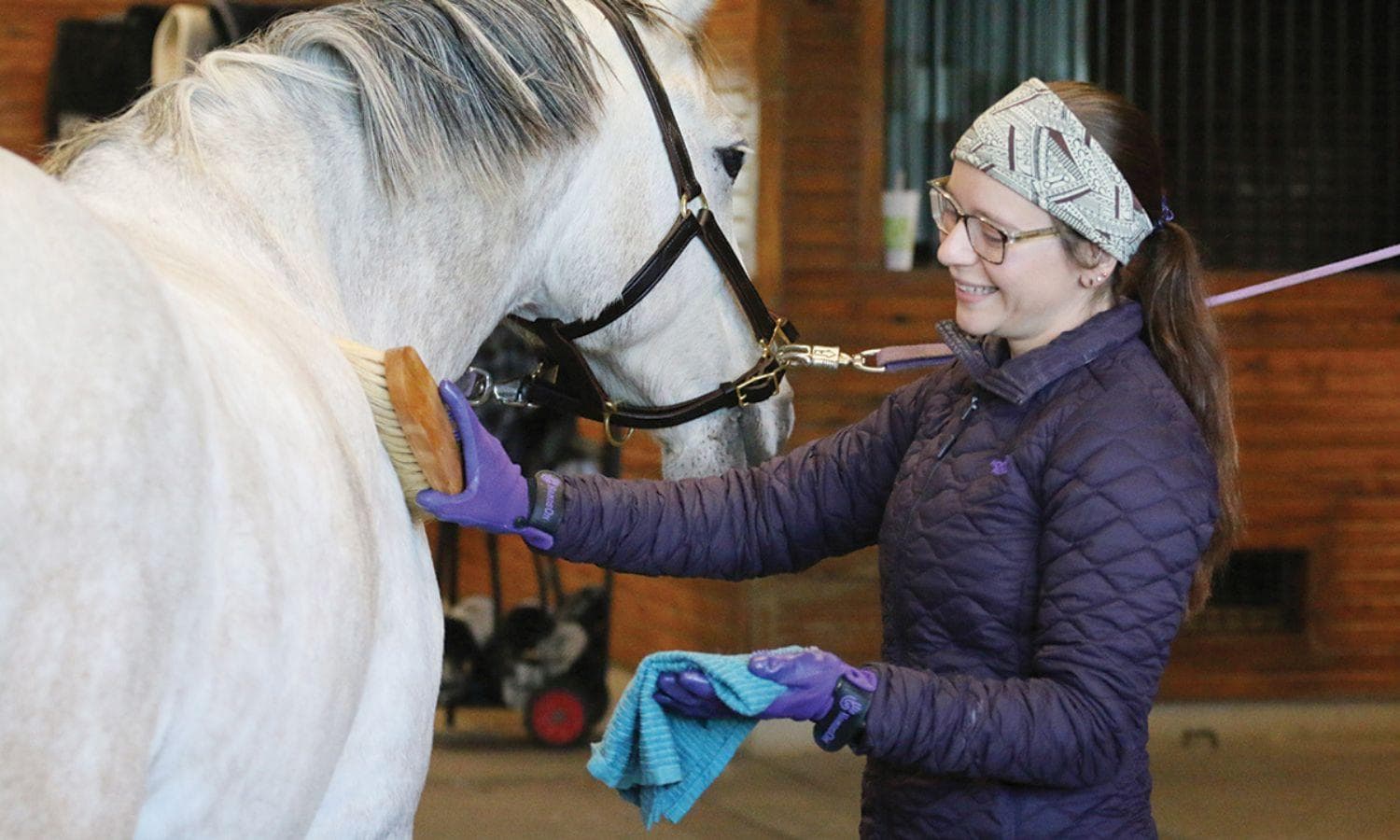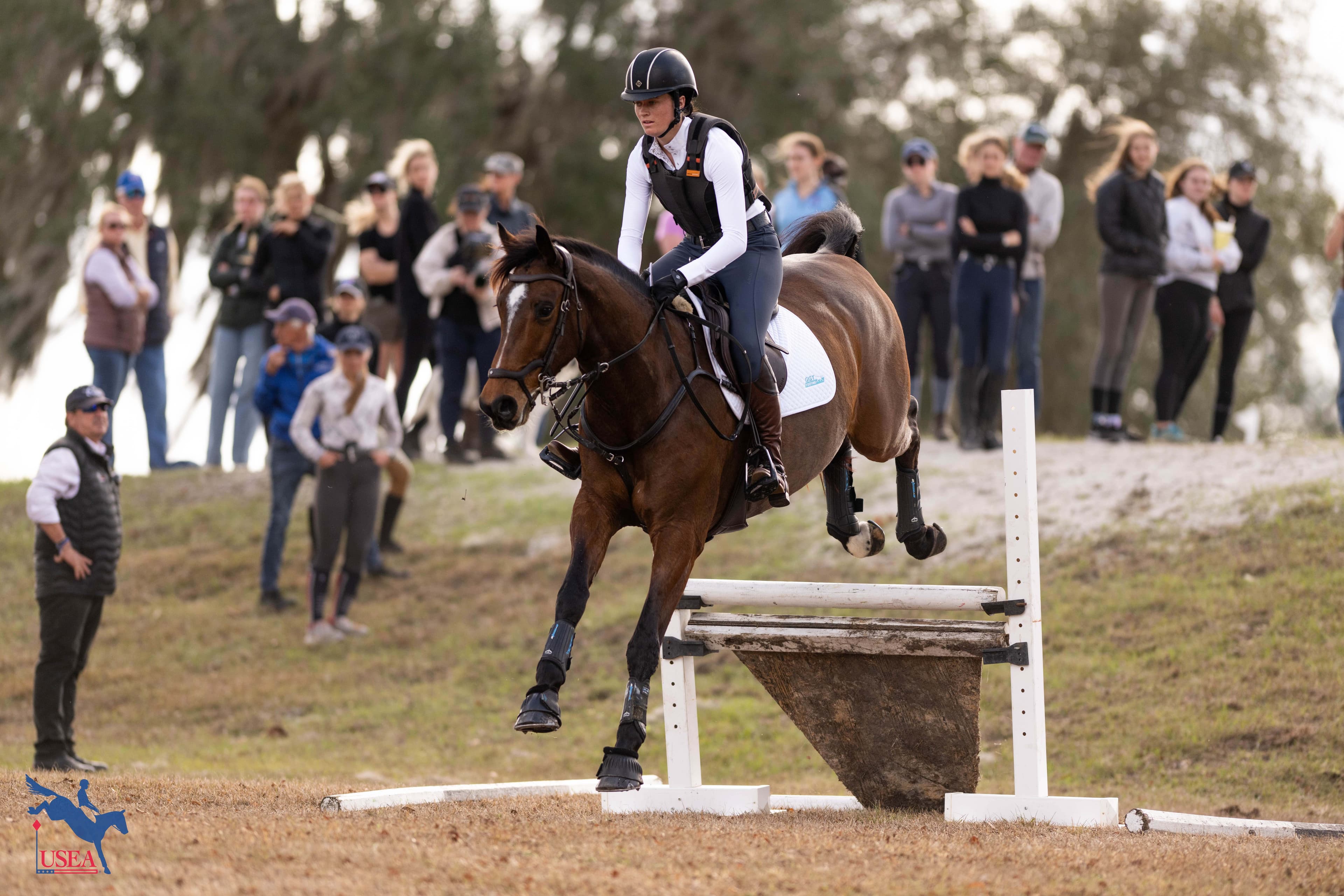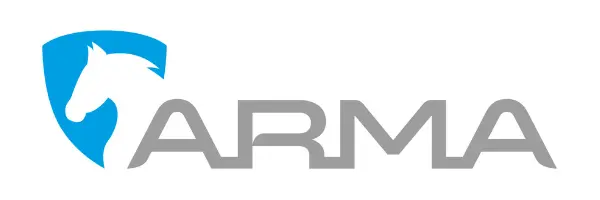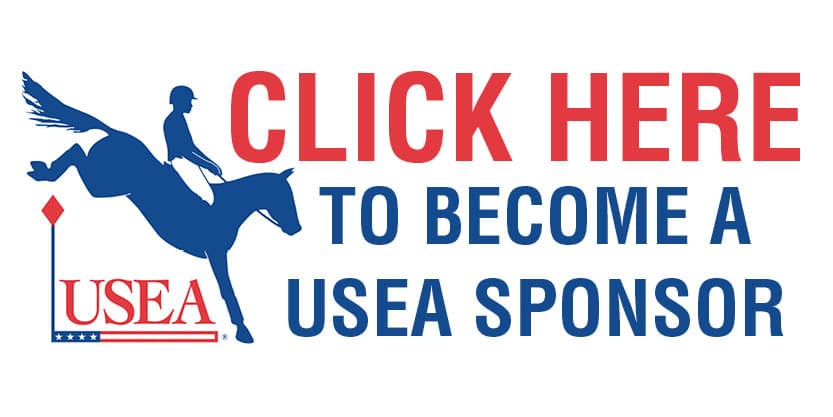Future Event Horses Show Potential in Leaps and Bounds at Dragonfire Farm's Jump Chute Clinic
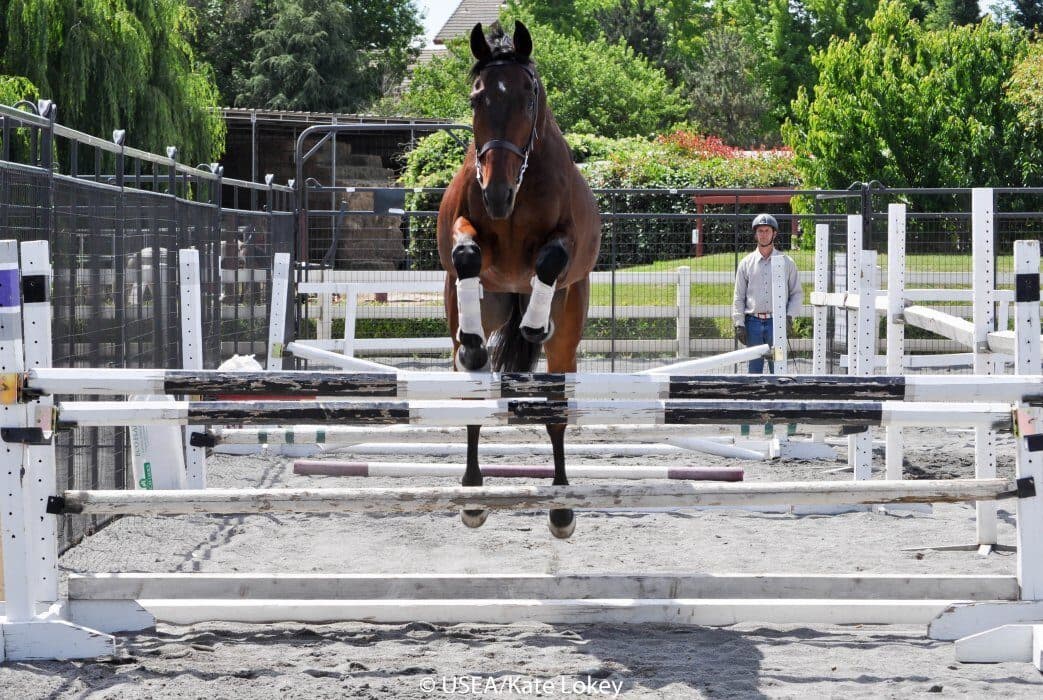
Thirteen horses traveled to Wilton, Calif., this past weekend to participate in the Priefert USEA Future Event Horse (FEH) Jump Chute Clinic at the beautiful Dragonfire Farm. The two day clinic provided owners, trainers, riders, breeders and handlers on the West Coast the opportunity to familiarize their young horses to the jump chute process. As previously announced, the 2016 USEA FEH Championships will feature a mandatory free jumping competition for the 3-year-old horses in addition to the standard in-hand class. In an effort to make the transition to this new addition as smooth as possible, the USEA is working to offer as many educational opportunities, like this one at Dragonfire, as possible in the months leading to the Championships.
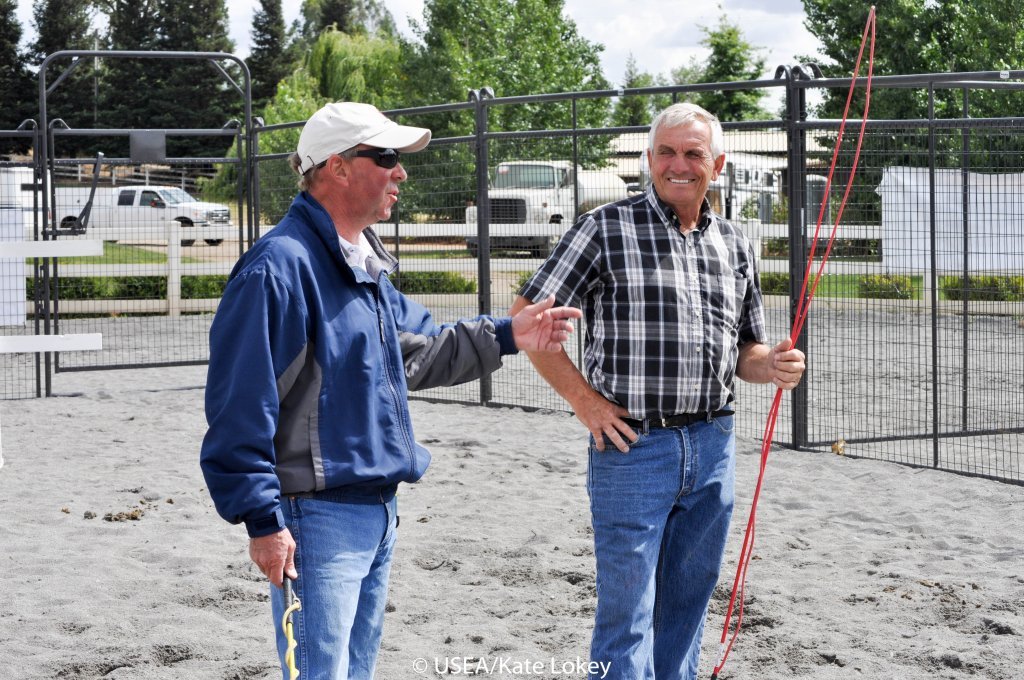
Clinicians Robin Walker (l) and Willy Arts (r). USEA/Kate Lokey Photo.
This weekend’s clinic was led and taught by international young horse experts Willy Arts and Robin Walker. With combined decades of experience with producing young horses, Arts and Walker led a very educational experience for both horses and handlers. The layout for the FEH jump chute grid is as follows:
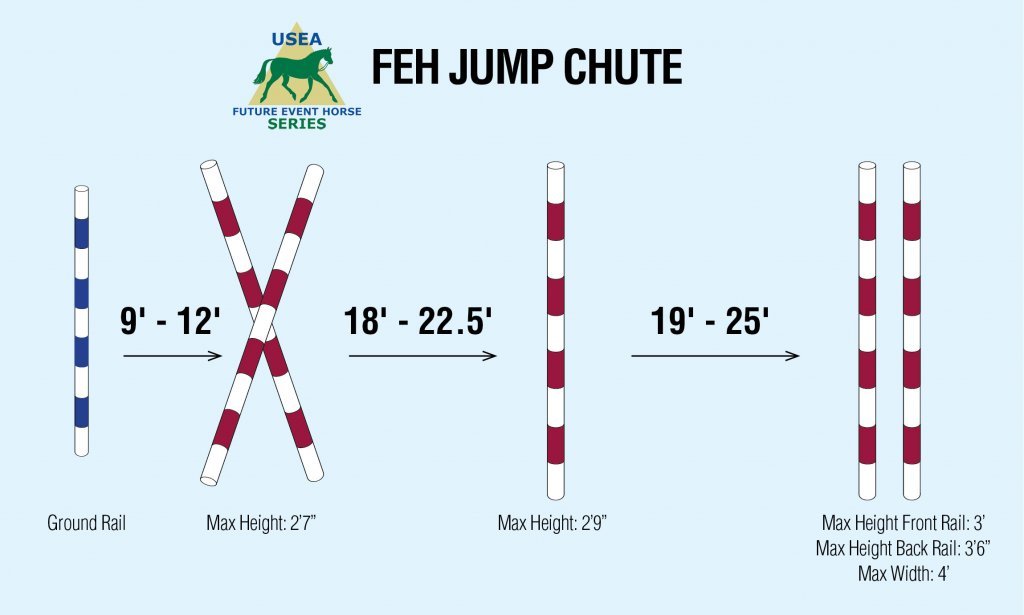
Having the clinic spread over two days meant these horses could be slowly introduced to the idea of free jumping over both days. Each horse started over ground poles on the first day. Height was only introduced to those horses who showed enough confidence over the ground poles first. Overall, the first day was kept very simple, with safety held paramount.
“The biggest thing in these situations is confidence,” said Arts of the jump chute clinic. “You want the horse to learn and move toward the jump, and come away from the day feeling like it was never over faced, but that it had a fun and positive learning experience.”
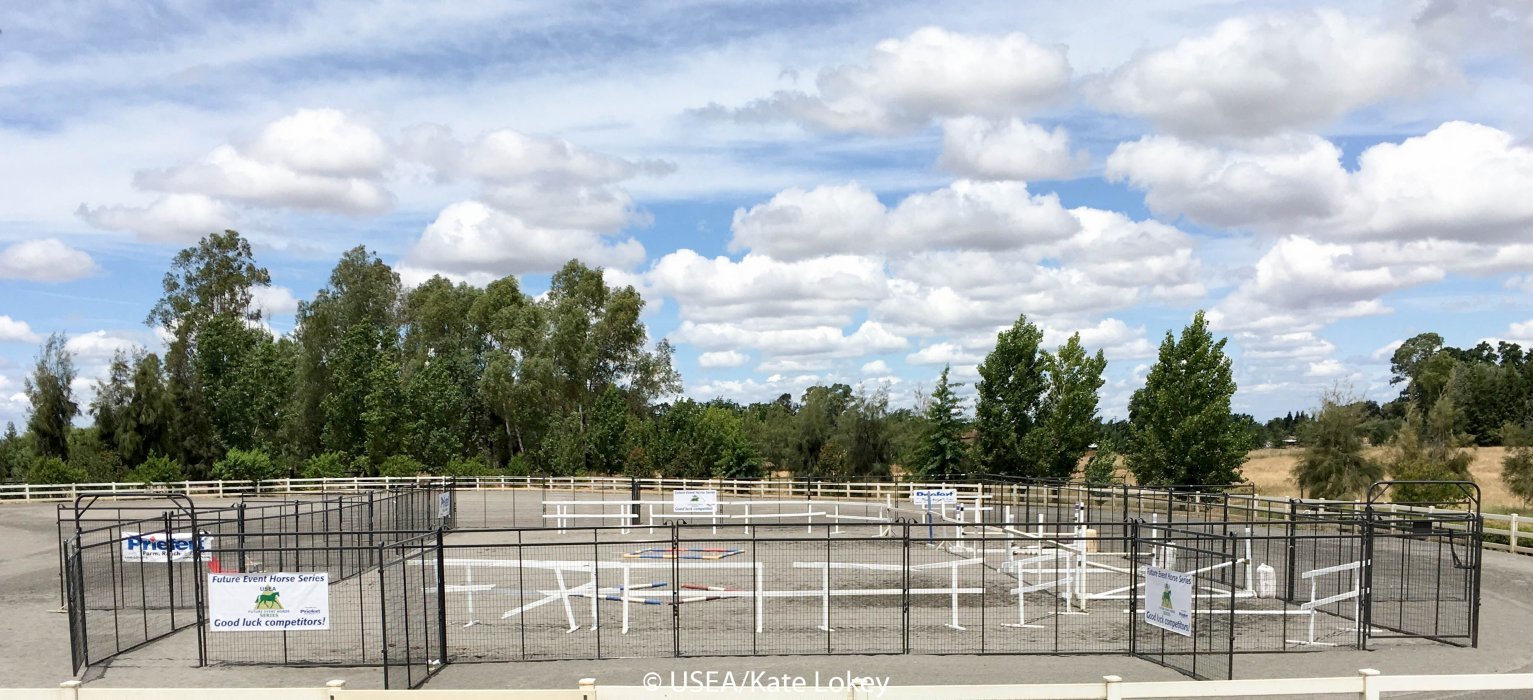
Thank you to Priefert for providing the FEH Program with this jump chute arena. USEA/Kate Lokey Photo.
By the second day of the clinic, most of the 3-year olds were confident enough to start off where they left off the previous day, and built up to FEH maximum height by the end of their session. Each young horse showed a natural progression across the two days, and they each showed intelligence by learning from their mistakes from the previous day’s work.
Not only did the horses learn to free jump through the grid, Arts and Walker also used this clinic as an opportunity to establish ground manners and obedience for each horse. Each horse presented differently, but Walker and Arts made a connection with every horse, providing substantial lessons to participants on handling horses through each stage of the free jumping experience.
At the FEH Championships, judges will evaluate each horse’s canter in the jump chute arena before they are asked to jump through the grid. At this weekend’s clinic, Arts guided, along with a team of whip handlers, each horse through a figure eight pattern at the trot and canter pattern in the middle of the arena.
Walker told spectators, “Each horse must respect the handler and the whip personnel. The horse must not go past you when you’re guiding or stopping them, and if they do not respect your lines of communication, you must be stern with them and correct them quickly, but then let them settle and then move forward again.” He explained that they never want to deteriorate a horse’s intelligence. You want them to learn from each situation, and then be calm and move forward quietly after being stern with them. Arts also noted to never crack the whip at the horses. “You must guide them with the whips, and tap them if necessary, but you never want to crack the whip because all you’re doing is creating an explosive horse,” Arts clarified. Walker chimed in saying, “It is ideal to keep the horses rhythmical and calm, yet forward.”
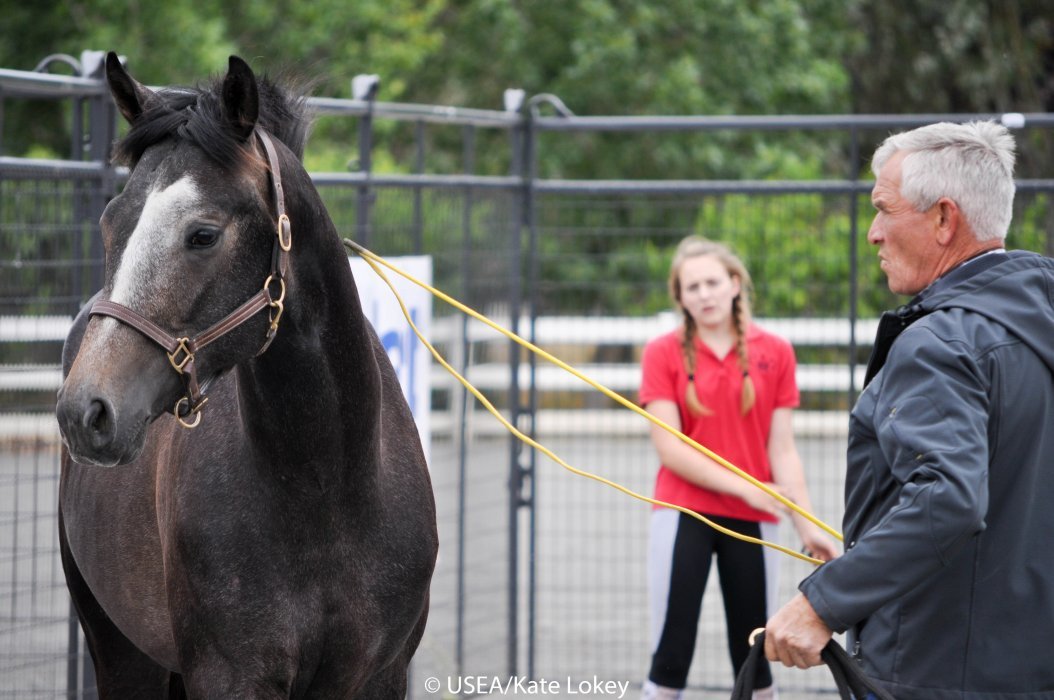
Willy Arts with Susan Darling-Mahoney's Bodega Sky (Virginia Sky PB x Barina). USEA/Kate Lokey Photo.
Once each horse was “rhythmical and calm, yet forward,” Arts and Walker would allow each horse to walk and then be led to the jump line. They were very sensitive to each horse’s capabilities, never asking more of a horse than they had to offer. Every horse left more confident than when they arrived, and the clinicians were very impressed with the quality of the participants.
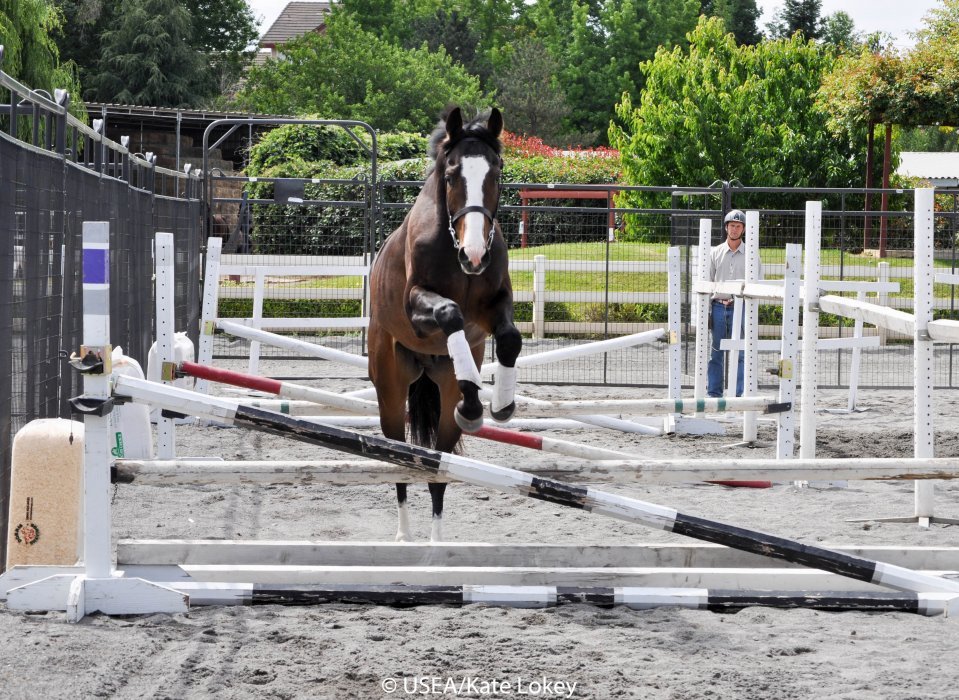
Natalie Jenson's Soul Twain DF (The Twain x Ladys Comet) through the chute.
“You cannot teach the horses to jump. They are either going to jump or they’re not going to jump. The only thing you can do is help them and think to yourself, “how can I allow them to use their neck and back and jump to the best of their ability? That is what we can do to teach the horses,” Arts concluded.
The USEA would like to thank FEH presenting sponsor Priefert for providing a jump chute structure for the West Coast, which was custom built for the FEH program with safety being the main priority in the design. The custom structure is composed of 12-foot long mesh wire panels, each standing 7-feet tall.
The USEA would also like to thank Earl and Jennifer McFall for hosting this clinic at their beautiful facility at Dragonfire Farm, and for helping stand in as handlers and whip personnel. The USEA also would like to share a big thank you to all who attended the clinic.
About the USEA Future Event Horse Series presented by Priefert
The USEA Future Event Horse Series (FEH) was introduced in 2007 as a precursor to the already popular USEA Young Event Horse Series. The FEH program evaluates the potential of yearlings, two-year-olds, and three-year-olds to become successful upper level event horses. Each age group is judged separately, and genders within the age group are judged separately when the number of entries allows. To learn more, visit the FEH page of our website.
West Coast Championship at Twin Rivers, Septmeber 23, 2016
East Coast Championship at Loch Moy Farm, Oct. 6, 2016
Future Event Horse: Policies and Procedures
About The Future Event Horse Jump Chute Competition
New in 2016, the FEH Championships will feature a free jumping competition in addition to the standard in-hand class. There are multiple USEA Jump Chute opportunities before these championships, and Loch Moy Farm will host free jumping clinics on July 7 and October 5. There will also be opportunities to practice in the jump chute the day before each of the FEH Championships, where a qualifier will also be held.
A jump chute competition will feature a grid made of three obstacles. There will be a distance of 9’-12’ between a ground pole and the first obstacle (usually a cross rail), 18’-22.5” between the first and second obstacle (usually a vertical), and 19’-25’ between the second and the last obstacle (usually an oxer). In practice at home, owners and handlers are encouraged to learn which distances suit their young horse best. The maximum height of the first fence is 2’7”, the second is 2’9” and the last fence is only going to be 3’ in front, 3’6” in back and 4’ in width. Each horse will be allowed to jump through the chute 4-6 times, gradually building up to maximum height.
